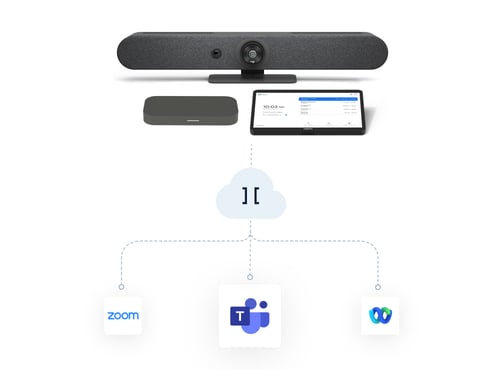For complex and often confidential video meetings in regulated industries, Pexip recommends ‘per participant policy’ for the most granular level of access control.
Can video conferencing truly mimic real-life meetings and complicated processes? For the everyday meetings between friends and colleagues, of course. But what about when video is applied to purposes such as court proceedings, doctor-patient consultations, government to citizen appointments, or even top-secret communication within defense departments?
It’s in these more complex use cases that the policy server plays a critical role – providing the meeting host with the ultimate level of control to both direct and restrict their video guests within the system.
A policy server is standard within any modern IT department and in video conferencing solutions, as policy is essentially authorization that enables you to join the meeting or access a system. However, the difference lies in the varying level of policy granularity that your video conferencing platform supports, which can be drilled down as deep as the individual participant level.
What’s possible when you can implement policy on a per participant level?
It’s here we can explore examples from various types of organizations that often require complicated video conferencing solutions, given their need to control access based on roles, locations, time of day, network type, or other specific criteria. Let’s look at some typical examples:
Justice
In a court proceeding on video, per participant policy can be used to create a virtual judge’s sidebar. This means that only certain people in select roles, such as the lead attorneys and the judge, can access that video sidebar – to mimic the ‘judge’s chambers’ in the real-life courtroom.
Defense
For meetings within defense departments, per participant policy can be used to adjust the classification level of the meeting when specific people join the meeting, perhaps based on rank or where that participant is currently located.
Health
In a video consultation with a physician, the meeting can be restricted to certain family members to prevent leakage of private health information. Or in a virtual physical therapy session with a group, participants are restricted to only seeing and hearing the therapist, while the therapist has access to everyone.
Government
A virtual townhall meeting can be timeboxed to a specific period in the day, and the participants who are allowed to speak during the meeting can be pre-set, while the other participants are muted.
Enterprise
For important video meetings such as with the Board, during an M&A process, or with investors, per participant policy can be used to timebox the meeting to take place only within (or outside) trading hours, for example, and contain the meeting to specific participants based on their roles.
Pexip delivers the ultimate level of control over your meetings
Pexip’s video conferencing platform is optimized for this level of granularity when it comes to access control. It was designed with zero trust in mind from day one, which means that no retrofitting is required when implementing per participant policy in video conferencing. This has made Pexip a solution of choice for regulated industries that have complex needs when it comes to bringing secure and custom video into their virtual workflows.
Find out more about Pexip Secure Meetings here.

.jpg?width=700&name=policy%20server%203%20(1).jpg)



